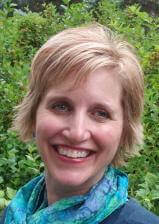So You Want to Write Books for Children? (Part 2)
Is writing for children on your long-term bucket list, or did you just recently acquire the itch? Either way, check out 4 more tips from guest author Mary Hertz Scarbrough to help you get started on the path to becoming a children’s writer.

Tip #1: Read as much as you possibly can – and then read some more.
Tip #2: Stop procrastinating, start writing.
Tip #3: Find like-minded writers to learn from.
Click Click here for more information for more details on each of these tips.
Here are 4 more tips to help you plunge into the world of children’s books:
Tip #4: Join SCBWI
This bit of advice is another take on finding like-minded people who write for children. The Society of Children’s Book Writers and Illustrators has more than 22,000 members worldwide and more than 70 regional chapters.
SCBWI (pronounced “SKIBWEE”) has two huge international conferences each year (in New York in January and in Los Angeles in August). Closer to home and likely far less intimidating to a new writer, SCBWI regional chapters put on some outstanding conferences – even out in the boondocks. My chapter, SCBWI Dakotas, has editor Cheryl Klein coming this fall. Small potatoes she is not; her illustrious resume includes work on the last two Harry Potter books.
SCBWI membership has many perks, including solid educational materials, grants, and awards for writers and illustrators (published and unpublished), online discussion boards, a bi-monthly magazine with tons of information, and more. A first-year membership in SCBWI is $85. If that amount is beyond your means right now, save your pennies, aluminum cans, or whatever it takes until you can swing it. It’s a worthwhile investment for new children’s writers and experienced ones.
Tip #5: Find Like-Minded Writers (Part 2)
Oops, am I repeating myself? Yes I am, because you can learn from your peers in so many ways. Start a critique group. Put up a flyer around town or at the library, if need be. You can also find critique partners online for a virtual group. All you need is one other person to have a group.
Restrict your group to other kids’ writers. A writer for adults will be of limited help to you, particularly when you’re just starting out.
Honing and polishing takes time. How much time varies from writer to writer, but it’s bound to take longer than you would like.
Does the thought of sharing your writing sound about as appealing as delivering a speech while naked in front of a large group? Then simply get together and write for a certain amount of time. Unlike with toys and kids, sharing your writing is optional at this point. Go online and find some writing prompts or make up your own. Set a timer and write away, even if it’s you at your computer and someone else at theirs.
Tip #6: Be Patient…And Realistic
How fast does a sloth move? According to Animal Planet, a sloth moves perhaps 125 feet in a day. Children’s publishers might be kissing cousins to sloths – scientists are testing this hypothesis as I write this. (I’ll keep you posted.) Once you have something worthy of submission, expect to wait forever for an answer. Okay, not forever, but most likely a long, long time. Editors are swamped.
The good news: Much of an editor’s slush pile is filled with bad writing, or promising manuscripts that are wrong for that particular publishing house. The bad news: The editor has to plow through that humongous pile to find a gem, one that has been honed and polished by a determined and practiced author.
Honing and polishing takes time. How much time varies from writer to writer, but it’s bound to take longer than you would like. So, not only do you need to be patient with editors, you need to be patient with yourself. Commit to submitting your writing only after you have developed your craft.
Nevertheless, begin to steel yourself for rejection long before you submit your first piece of polished prose to a children’s editor. Recognize that it’s virtually a given that you’ll experience rejection. Jane Yolen, author of more than 300 books for children, including many, many award-winners, still gets rejections. Realize it’s all part of the learning process.
Rejection can feel intensely personal, so begin to cultivate an impervious attitude. You will come to understand that there’s even a hierarchy of rejections – yes, you can get excited about an editor’s rejection.
Tip #7: A Final Word of Advice
Don’t try to cram all of these tasks into your life at once.
Read as much as you can. Write regularly, according to the schedule you set. Choose a third task, even if it’s just reading the blogs of your favorite writers for 30 minutes each week. Three steps, and you’ll be on your way to becoming a children’s author!

